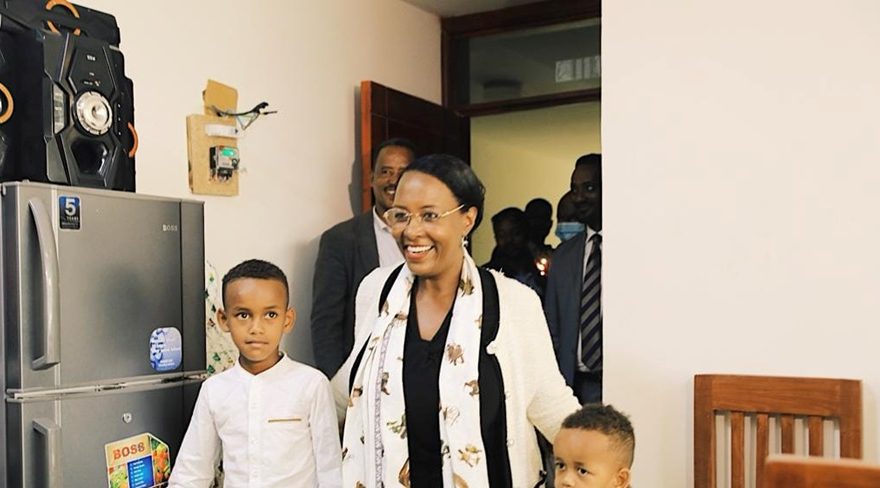
(Development projects thoughtful of cultural settings)
The on-going Addis Ababa City and corridor development projects were feared to have put the curtain down on the long-lived and deeply-entrenched cultural values such as resident’s harmonious societal structures. The city has long been known for being a socioeconomic, cultural and political hub of various ethnic groups hailing from all corners of the country. Residents of Addis are comprised of not only local ethnicities but also several international communities. When the ball of City and Corridor Development Project plans began rolling, complaints were aired as if they targeted the destitute and would mar the harmonious lifestyles of the residents.
Such anxieties and harsh criticisms could have been drawn from a long-gone system of city development projects which had impacted the extended and harmonious lifestyle owing to their relocation procedures. In tightly bonded traditional societies, development projects that could do away with long-lived harmonious cultures, by scattering the displaced to several separate locations, the impact could be sever. The development projects before Prime Minster Abiy Ahmed, have been condemned for relocating communities in several separate areas and affecting their long-lived sociocultural and even economic integration. People were psychologically affected and it was witnessed that a significant number of residents suffered from mental illness, while others died because of the relocation impacts.
Addis Ababa has communities with strong socioeconomic and cultural bonds and several traditions have passed from generation to generation. Some of the typical traditions include large families and relatives living in one neighbourhood. Different ethnicities have their own large family living in the same neighbourhoods. Despite daily economic activities, there are occasions such as the daily coffee ceremonies to bring these large families together every day.
There are also other cultural institutions like Equb, a traditional-rotatory-fund-generating-and -saving mechanism entailing institution, Edir, another traditional institution of social support or a form of insurance, Deboo, a collective farming method, which is close to the current cluster approach, Tsiwa Mahbers, religious institutions, via which people feed poor people in memorials of Saints and the holy spirits.
Most of all people in the same neighbourhoods have long-standing traditions to go door to door and celebrate indoor holidays as the adults sit on one, youths on another, and children on their separate tables to dine on the finest traditional meals together.
These cultural values once have been annihilated by the irresponsible relocation process of developmental projects in the EPDRF-led regime. As a result, it does not come as a surprise to witness the fears and to hear the grumbles coming from all directions while the current city and corridor development projects are afoot. “We may hear harsh criticisms and cacophony, but if we fail to proceed aggressively and boldly, the promise we made to make Addis Ababa a flower as depicted by its name will never be realized. And that will reduce as to failures”, said the Prime Minster recently while discussing the progress of the corridor development project with the task force in charge.
Despite the fears and complaints in the rumour’s mill, the new city development projects have been wisely thought through and are resilient, the officials in charge repeatedly announced. Recently, the Mayor of Addis Ababa Adanech Abiebie delivered a report concerning the city and corridor development projects’ progress. In the report, the mayor said that residents whose homes were demolished have been relocated with planned and cautious procedures. Residents have been warranted that they inhabit in same neighbourhood in a way that they never lose their traditions and cultural values.
That means not only individuals but also communities were relocated in new neighbourhoods that enabled them to live together and practice their traditions once more. Some residents prove so emotional when they describe how the well-thoutout relocation kept the communities together.
“I was from the heart of the City Piasa. My neighbourhood was called Doro Manekia. It was a noisy place and am so happy to be at my new residence!” said a child who is living in a new neighbourhood as her family was relocated because of the corridor development project. A mother by the name of Fantu, could not help crying while she compared and contrasted the difference between life in the old neighbourhood, ‘Doro Manekia’ and the new one. People from the same neighbourhood, Doro Manekia’ are brought together to new blocks of four-storied buildings and happily the old social interaction is still going.
“If you visited the capital of our countries, the projects are beautifying the city,” said Tsige Haile a resident at Arat Kilo.
Meticulously bringing the relocated neighbourhood to one same area has maintained the cultural values. It has also saved the harmonious traditional integrities of the people, said Adanech Abiebie, the prominent figure who always stood on the front lines of the execution of such ambitious projects not only in the city but also throughout the country. The mayor has also affirmed that the city’s development is not confined to building green areas and corridors. It also aims at building enthused generations and a new working culture.
She recently posted an article on her Facebook’s social platform that the City Administration, over the past nine months now, has been dedicating its energy and time to turning Addis Ababa eye candy or new flower, as its name indicates and a wonderful tourist attraction site. She said that her administration succeeded in bringing into play and inaugurating several state-of-the-art projects, which are built creatively, resiliently, and society-focused. A great deal of new working culture is one of the achievements that the projects made possible. On the other hand, the inclusive projects have made sure that women’s empowerment is the focal point. In this case recently “the Future Women Rehabilitation, Centre of Excellency Training Centre” was officially inaugurated.
On the other hand, preserving the architectural and historical heritages is the other issue of concern. Of course, a city development has to go in line with the standards that keep heritages protected. Meanwhile, some buildings were demolished while the dilapidated renovated. Many deep-throated complaints have been on the air. The main figure of the City Development projects, Prime Minister Abiy Ahmed, and the Authority for Research and Conservation of Cultural Heritage said most of the buildings around Piasa, based on the new standard, do not qualify as historical heritages.
According to the mayor, the projects have continued at a fabulous pace and added efforts to turn Addis Ababa a flower true to its name will be exerted rendering its residents beneficiaries of the perks of prosperity and making sure the relocated people gain the appropriate land, as well as compensation to rebuild their new homes.
BY NAOL GIRMA
The Ethiopian herald May 17/2024




